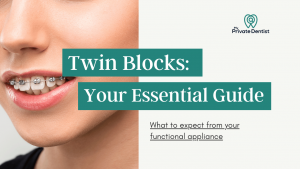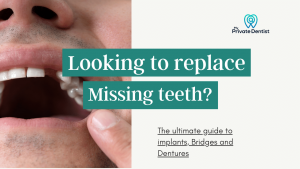How much does composite bonding cost?
Composite bonding costs between £150-£400 per tooth. On average, 8 to 10 teeth are bonded in a cosmetic procedure. The cost varies depending on the experience of the dentist, and location of the dental clinic.
One of the most common questions I get in my clinic is “how much does composite bonding cost?”. It has emerged as a more affordable cosmetic alternative to crowns and veneers in recent years. If you’re thinking about getting composite bonding, stop, and consider…
The downsides of composite bonding
In a world where bright straight white smiles are all over our timeline, it’s easy to be tempted into having cosmetic dental treatment. Before and after photos of ‘instant’ smiles seem to make it a no-brainer.
Composite bonding is increasing in popularity as an alternative to other cosmetic procedures as it tends to be more affordable. But is it the best option for you?
As a dentist I can tell you, it is very important to know all the information before you decide to have composite bonding. Although many people are pleased with the results of their treatment, some may have not been so happy.
I have written this article to give you a balanced and unbiased view on the pros and cons of composite bonding.
My aim is to help you make the best decision for your teeth, by helping you to understand the long term effects of composite bonding.
In short..
- Composite bonding should only be done by an experienced dentist with a good track record.
- It is not completely reversible, and it will need repair or replacing over time
- Composite resin has its limitations. It is not as strong as your natural teeth. It can chip, wear and pick up stain over time.
Gold Standard: What is the BEST treatment?
In my opinion, rather than just composite bonding, the best treatment for people who want to improve their smile is:
Align – Fixed or removable braces to straighten your natural teeth is a good long term option. Read about Types of Braces.
Brighten – Tooth whitening can be used to enhance the colour of your teeth
Composite Edge Bonding – Minimal addition of composite resin only to the edges of your teeth to correct minor irregularities. (Read more: Composite edge bonding)
What is composite bonding?
Composite bonding is also known as Dental Bonding, or Cosmetic Bonding.
It involves the addition of a tooth coloured composite resin material to your natural tooth in order to change the colour and shape. It can be used if you would like to:
- Recontour the shape of your teeth
- Adjust the size of your teeth
- Close gaps between your teeth
- Mask the natural colour of your teeth.
Adding the resin to 8-10 front teeth can alter and enhance your smile.
Why is composite bonding so popular?
In dentistry, the popularity of composite bonding has coincided with the rise of the selfie and Instagram. I was at university 15 years ago and the term was not used widely in cosmetic dentistry at that time.
The ‘instant nature’ of the treatment, and the before and after photos being easily shareable, has meant a surge in popularity.
Instead of people having to fork out thousands for a new smile, people were able to have new teeth for a few hundred pounds. Unfortunately not everyone has the results they were hoping for.
Composite is traditionally used as a direct filling material for cavities. In cosmetic cases, composite bonding is placed as a layer over the visible front tooth surfaces to change the colour and shape of them. Initial short term results are good, but it is important to understand the limitations of composite bonding..
When properly planned and maintained, composite bonding is a good treatment option to enhance a smile. However, it is important to know all the facts before proceeding. Having to have composite fixed, or removed and redone can lead to further dental appointments and unexpected costs for some patients.
How long does composite bonding take?
The composite bonding procedure itself takes around 60 to 90 minutes. You will have an initial consultation first to discuss your treatment, and a review appointment afterward to make sure you’re happy with your new smile.
How long does composite bonding last?
Composite bonding will last and look its best for around 5-7 years. The longevity of the treatment will depend on a number of factors including:
- Your occlusion: The way you bite and grind your teeth together
- The quality of the materials used
- Maintenance: how well you brush and floss your teeth
- Avoiding bad habits: smoking and biting your nails etc.
- Avoiding staining foods and drinks such as red wine and coffee
Detailed Step By Step Guide: How is composite bonding done?

- Planning – A dentist will ask you what you would like to achieve with your new smile. They will go through the different treatment options including braces, bonding and veneers. They will detail the costs, benefits and drawbacks of each.
- Digital Mock up/Wax up – Also known as a trial smile, it gives you an idea of what your finished smile will look like. Often this is done by sending an impression of your teeth to a dental lab. They wax up what your teeth could look like. The dentist can then use this wax up to trial your new smile in your mouth using a temporary acrylic material. This is the most effective way to see if the treatment is acceptable for you. There may be a cost associated with this trial smile.
- Consent – If you’re happy, you can book in for the procedure. The dentist may also give you a written consent form to sign with all risks and benefits of the procedure.
- Whitening – if you would like to whiten your teeth before the bonding then this is done at this stage. The dentist will provide you with custom fitted trays and whitening gels containing a bleaching agent. You will whiten your teeth for 2-3 weeks, or until you have achieved the desired shade. Note: Your whitening trays will not fit once you have finished the treatment. Also the composite resin itself cannot be whitened so it’s important your happy with the shade before the teeth are bonded.
- Shade taking: Composite resin is available in a variety of teeth shades. The dentist will match the one closest to your teeth. Whiter teeth tend to be easier to shade match.
- Preparation of the teeth: On the day of the appointment, the teeth which are to be composite bonded are cleaned, and any old fillings removed. Unlike many other dental treatments, local anaesthetic is not required.
- Isolation: For the composite to bond well, it’s important for the teeth to be kept dry. This can be done by using a rubber dam and frame, which holds your mouth open to prevent saliva contaminating the bond.
- Etch and Bond: The teeth are then prepared with an acid etch solution to make the surface more porous. The bond is then applied. This seeps into the enamel surface, and is cured with the blue light.
- Application of composite: The composite is then carefully placed on the tooth, and shaped. A blue light is then used to set the composite hard. This curing light may feel warm on your tooth, but is not painful.
- Shaping: The composite resin is refined with a handpiece and polishing discs.
- Polishing: The dentist will then use a series of brushes to polish the teeth to a shine. The better the teeth are polished, the better they will look. Smoother surfaces are also less likely to stain.
- Review: A review appointment will be made 1-2 weeks later, to allow you some time to adjust to your new smile. If you’re satisfied with the results, then a final polish and photos are usually taken. If you have any concerns, or would like any alterations, they will be addressed at this visit. The dentist should be able to add or remove small amounts of composite as you feel necessary.
- Maintenance: The dentist will give you advice on looking after your composite bonding. Regular hygiene visits will keep your gums and teeth looking their best.
Advantages of composite bonding
No need for local anaesthetic: for those who prefer treatment without injections, composite bonding is an additive process that is painless without having to be numbed up.
Cost: Is a more affordable alternative to veneers.
Less destructive to teeth: Enamel and dentine are valuable. Once removed you can’t get it back. Preparation for crowns or veneers involve removal of tooth for the treatment, while composite bonding is an additive process and requires no drilling.
Disadvantages of composite bonding
High maintenance: Composite bonding will not last you a lifetime. It lasts around 5-7 years after which it is likely to chip and stain. At this point it may need to be completely redone. The old composite bonding will have to be removed back to the natural tooth and then reapplied. Because composite has to be removed first, replacement procedures may cost more than the first time.
Staining: Composite is a slightly porous material and can pick up stains. To keep it looking its best, avoid darkly pigmented foods and drinks. Veneers are glazed when finished, so are less likely to stain.
Not as durable as crowns and veneers: Composite material is not as strong as the porcelain from which veneers and crowns are made. [1]
Veneers look better: Veneers are made by technicians in a lab. They are layered, shaped and set in specific lab conditions. Therefore they can look more natural and last longer. They arrive in the clinic finished in the lab, so no need for a dentist to polish them after.
Am I suitable for composite bonding?
Consider the following questions for your suitability for composite bonding:
Are your teeth and gums healthy? Address any dental health issues before you have composite bonding. Cosmetic procedures should only be carried out if you are otherwise dentally fit.
Do you have broken, chipped or worn front teeth? Composite bonding can help to fix the teeth, but how your teeth were damaged in the first place could play a role in how long your treatment lasts. If you traumatised your teeth in an accident, then as long as it doesn’t happen again your treatment should last. If your teeth have worn because you grind them together, you will need a mouthguard to protect your teeth and composite bonding at night.
Do you have gaps between your teeth? This can be resolved in one of two ways. Composite can be added to the outer surfaces to close spaces. Again this could be a good short term solution, but will need replacing in time. Consider brace treatmetn to close spaces between your teeth. These could be clear aligners e.g. Invisalign or traditional brackets and wires. Long term retainers will be needed to prevent gaps from reappearing.
Do you have small or short teeth? Composite bonding can help to make teeth appear larger and longer. It’s a good idea to have a trial smile to see what the addition of composite will look like, before proceeding with treatment.
Do you have roots showing through gum recession? Sometimes people are unhappy with the appearance of their teeth, due to their gums receeding and yellow colour of root showing. Covering the root surface in composite could work well in mild cases but if you have more significant defects the teeth could end up looking too long. In these cases you may end up considering a gingival graft.
Does composite bonding hurt?
Composite bonding is a painless procedure. No drilling of tooth tissue or injections are required.
Can composite bonding be done on the NHS?
Cosmetic composite bonding is an aesthetic treatment and is not covered on the NHS. However if you have fallen and broken your teeth, or if you have tooth decay, you can have simple composite fillings done on the NHS. These are to restore structure and function rather than to improve your smile.
Will composite bonding be included on my dental plan?
Most dental plans include exams, hygiene and work that is deemed clinically necessary. For example, if you need a filling because of decay, or a crown to restore a broken tooth. If you have tooth wear,your dental plan may include building them up again. Most plans do not include cosmetic work.
Is composite bonding cheaper than veneers?
Yes. veneers are made in laboratories by specialised technicians and cost between £600-850. Composite bonding costs around £150-£400 a tooth.
Is composite bonding better than Invisalign?
They’re different procedures and it depends on the case. The advantage of composite bonding is that it is almost an ‘instant’ procedure. You go in with your teeth looking one way and within an hour you could have a new smile. Invisalign takes much longer and moves your own natural teeth into a better position to improve your smile. However the results are more long term, and require less maintenance.
Is composite bonding reversible?
In my opinion, I would say composite bonding is NOT reversible- or at least not easily reversible. The natural front surface of your tooth has a particular shine to it. Once this has been acid etched, bonded and composite has been added to it, it is very difficult to return to that state. If the composite is to be removed without touching the underlying tooth enamel,it must be done very carefully, by a skilled clinician, under magnification. If the composite is well colour matched (which it should be) this is even more difficult to do.
Remember, the bond is strong. Composite bonding cannot just be flicked off, it has to be drilled off.
Do veneers look better than composite bonding?
Composite bonding and veneers have a slightly different ‘look’ to them. Bonding your teeth after whitening usually leads to plainer, more uniform looking teeth. This may be the style you prefer. A dentist can try to layer composite to make the composite bonding look more natural but this can only be done well by a select number of cosmetic dentists.
Natural looking veneers can be made in a dental lab and have much more detail. The technician can use tints and glazes which result in a more refined finish.
Can I have composite bonding if I have sensitivity?
Yes. In fact composite bonding could help reduce the sensitivity of your teeth.
Tooth sensitivity is usually caused as a result of the loss of enamel. Composite bonding adds resin over these areas and helps protect the nerve inside the tooth.
The procedure itself does involve drying and washing the teeth with cold water, so your teeth could be sensitive while having it done. You can request local anaesthetic if you feel any discomfort.
What is the difference between composite bonding, composite veneers and composite edge bonding?
Both composite veneers and composite edge bonding are types of composite resin bonding. Composite veneers cover the front surface of the tooth , while edge bonding is more minimal, as only the edges of the teeth are bonded. (Read more about Composite edge bonding here)
Do you need to drill down teeth?
No, composite bonding is an additive process, no drilling of tooth tissue is involved.
If my teeth are crooked can I have composite bonding?
The positions of the individual teeth can be analysed by the dentist prior to deciding on the treatment. This is where a wax up or trial smile can help. If the results you would like to achieve can be done by just adding composite, then yes. If not, then braces may be useful to move the teeth into a more favourable position before you have composite bonding.
How do I maintain composite bonding?
- Brush twice a day with an electric toothbrush.
- Floss daily. (How to floss)
- Avoid too many staining foods and drinks.
- Avoid smoking.
- Regular check ups and Hygiene visits.
Does composite bonding work with whitening?
Whitening your teeth prior to having bonding is recommended.
You should whiten your teeth to the desired shade before having composite bonding. The composite applied will then be matched to the colour of your teeth. The whiter your teeth are the easier it is to shade match.
The bleach used for professional dental whitening only works on natural teeth and not on the resin composite. Once you have composite bonding, whitening your teeth will have limited effect.
Is composite bonding suitable for smokers?
Smoking causes unhealthy gums and staining. If you would like to have cosmetic dentistry, it is best to stop smoking first. The dentist will need to make sure your gums are healthy before you proceed. Smoking will stain the margins and dull the surface of the composite. Your nice new bright smile may not last.
I have TMJ Disorder. Can I still have composite bonding?
If your TMJD is well managed with a mouthguard or splint, you can still have composite bonding. If you wear a lower splint and are having upper teeth bonded then you can still wear the same one.
A symptom of TMJD is clenching or grinding your teeth. If this applies to you, any cosmetic work you have done is at risk of chipping or fracturing. It is essential that you wear a mouthguard when sleeping to protect your composite bonding.
Finding a dentist to do composite bonding?
Even if you have a regular dentist, you may consider looking elsewhere for cosmetic procedures, such as composite bonding.
Important things to consider when looking for a dentist:
- How experienced is the dentist in composite bonding [2]: How many cases have they completed? Do they have before and after photos of previous work?
- Has the dentist had extra training in cosmetic procedures? Many dentists attend specific courses to improve their skills.
- Can the dentist provide a wax up trial smile? This will give you the best indication of what your teeth will look like once the treatment is completed. You don’t need to proceed with the treatment; if you’re not satisfied with the mock design.
What should I do now?
If you’re interested in composite bonding, find an experienced cosmetic dentist today.



